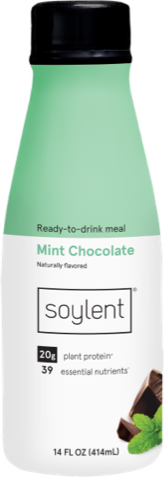meals donated to date through our Soylent for Good Program
stores carry Soylent making it more accessible than ever
non-profit organizations are working in partnership with Soylent
Soylent puts sustainability first by ensuring our products have the lowest environmental impact of all protein shakes on the market.
Soylent puts sustainability first by ensuring our products have the lowest environmental impact of all protein shakes on the market.
Read More
0
%Soy protein creates 25% less negative impact on the environment than other plant-based proteins
0
%Soy farming produces 334% more usable protein per acre as compared to whey (dairy-based protein).
0
We use 1,484 less gallons of water to produce 1 pound of Soybeans vs. 1 pound of conventionally farmed beef.
0
%of Soylent employees feel they are “respected, included, and valued” at work.
Read More about DEI
We believe it is our duty to use our business strengths to give back to the communities in which we live and work. We believe that everyone should have access to healthy nutrition and that no one should go hungry.
Read More about Meal Donations
Our farmers are in the United States – they protect highly erodible soils and wetlands, and manage their family farms with responsible labor practices.
Read More
0
%of Soylent employees said they do not have to cover any part of their identity at work and 95% said the company’s benefits are “very inclusive” of their personal and family needs.
Read More about DEI


Soy can improve soil health because it is a nitrogen fixing crop which means that it harbors bacteria that can use nitrogen from the atmosphere as fertilizer for the plant, greatly reducing the amount of fertilizer that must be used to grow soy compared to other non-legume crops.
Have any questions? Please reach out today!
Find research, data, and sources for the informaton on the page above through the link below.